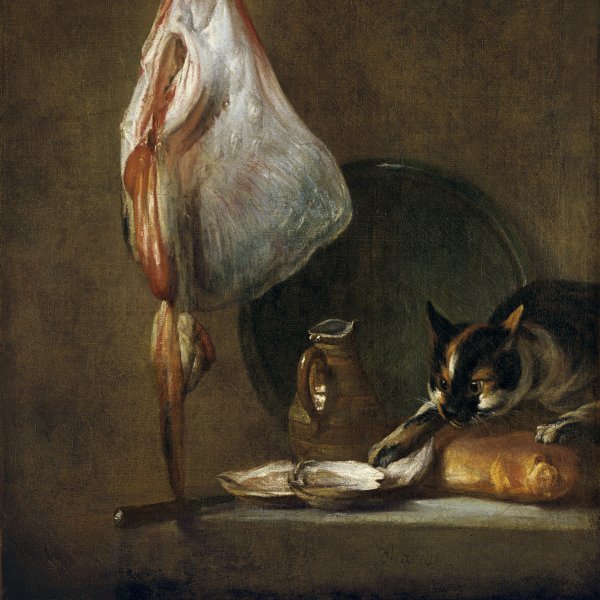Concert Champetre
1734
Oil on canvas.
53 x 68.5 cm
Museo Nacional Thyssen-Bornemisza, Madrid
Inv. no.
313
(1935.14
)
Not on display
Level 2
Permanent Collection
Level 1
Permanent Collection
Level 0
Carmen Thyssen Collection and Temporary exhibition rooms
Level -1
Temporary exhibition rooms, Conference room and EducaThyssen workshop
Like Watteau, Jean-Baptiste Pater was born in Valenciennes. The son of a sculptor who was a friend of Watteau, Pater first studied with his father, then in the studio of the local painter Jean-Baptiste Guidé. In 1713 he was in Paris in Watteau’s studio where he studied with the artist following Watteau’s brief period in Valenciennes around 1710. Pater seems to have left Watteau for reasons more to do with the latter’s difficult character than purely professional ones. After this experience Pater spent various years in Paris then returned to Valenciennes around 1715, moving back permanently to the capital in 1718. In 1721 the by now sick Watteau was reconciled with his former pupil in Nogent-sur-Marne. At this time Watteau’s influence on Pater’s work was evident as was the latter’s choice of subject matter which would bring him success and fame. Pater entered the Académie as a painter of fêtes galantes in 1728. His entry work was a canvas now in the Louvre that depicts a military celebration and recalls, albeit with differences, the military scenes popularised by Watteau at the start of his career.
Concert champêtre entered the Rohoncz collection in 1935 and has been included in the catalogues of the Collection since 1937. The painting was in the collection of Count Dubarry until 1774 when it was sold in Paris with its pair, another work of the same title that is now in the Metropolitan Museum of Art, New York. The canvas was in various French private collections and was in the Pierpont Morgan collection with its pair. The two paintings were split up following their sale from that collection in 1913. The present work was acquired for the Thyssen-Bornemisza collection via the Mercuria gallery in Lucerne.
Concert champêtre features the most characteristic traits of Pater’s art, which brought him such success and celebrity. It depicts a day of leisure among the urban classes of elevated social rank on the outskirts of a city. Pater organised his concert into two clearly defined groups that occupy successive pictorial planes and form a diagonal that leads the eye into a misty landscape in the background. The principal group on the left is organised around a couple, of which the man plays the guitar while the woman points to a page in the musical score that she holds, presumably suggesting a piece for him to play. The other figures around them are grouped into pairs, chatting and commenting on the scene, apart from a young man who looks with interest at the musical score. In the group on the right, which is set against a monumental architectural element, the painter places considerable emphasis on small details such as the little girl in the foreground who attracts the dog’s attention with a bone. This signed and dated canvas derives from compositions by Watteau but lacks that artist’s subtlety. The figures are painted in lively tones and the overall mood is relaxed and cheerful.
Mar Borobia
Concert champêtre entered the Rohoncz collection in 1935 and has been included in the catalogues of the Collection since 1937. The painting was in the collection of Count Dubarry until 1774 when it was sold in Paris with its pair, another work of the same title that is now in the Metropolitan Museum of Art, New York. The canvas was in various French private collections and was in the Pierpont Morgan collection with its pair. The two paintings were split up following their sale from that collection in 1913. The present work was acquired for the Thyssen-Bornemisza collection via the Mercuria gallery in Lucerne.
Concert champêtre features the most characteristic traits of Pater’s art, which brought him such success and celebrity. It depicts a day of leisure among the urban classes of elevated social rank on the outskirts of a city. Pater organised his concert into two clearly defined groups that occupy successive pictorial planes and form a diagonal that leads the eye into a misty landscape in the background. The principal group on the left is organised around a couple, of which the man plays the guitar while the woman points to a page in the musical score that she holds, presumably suggesting a piece for him to play. The other figures around them are grouped into pairs, chatting and commenting on the scene, apart from a young man who looks with interest at the musical score. In the group on the right, which is set against a monumental architectural element, the painter places considerable emphasis on small details such as the little girl in the foreground who attracts the dog’s attention with a bone. This signed and dated canvas derives from compositions by Watteau but lacks that artist’s subtlety. The figures are painted in lively tones and the overall mood is relaxed and cheerful.
Mar Borobia









